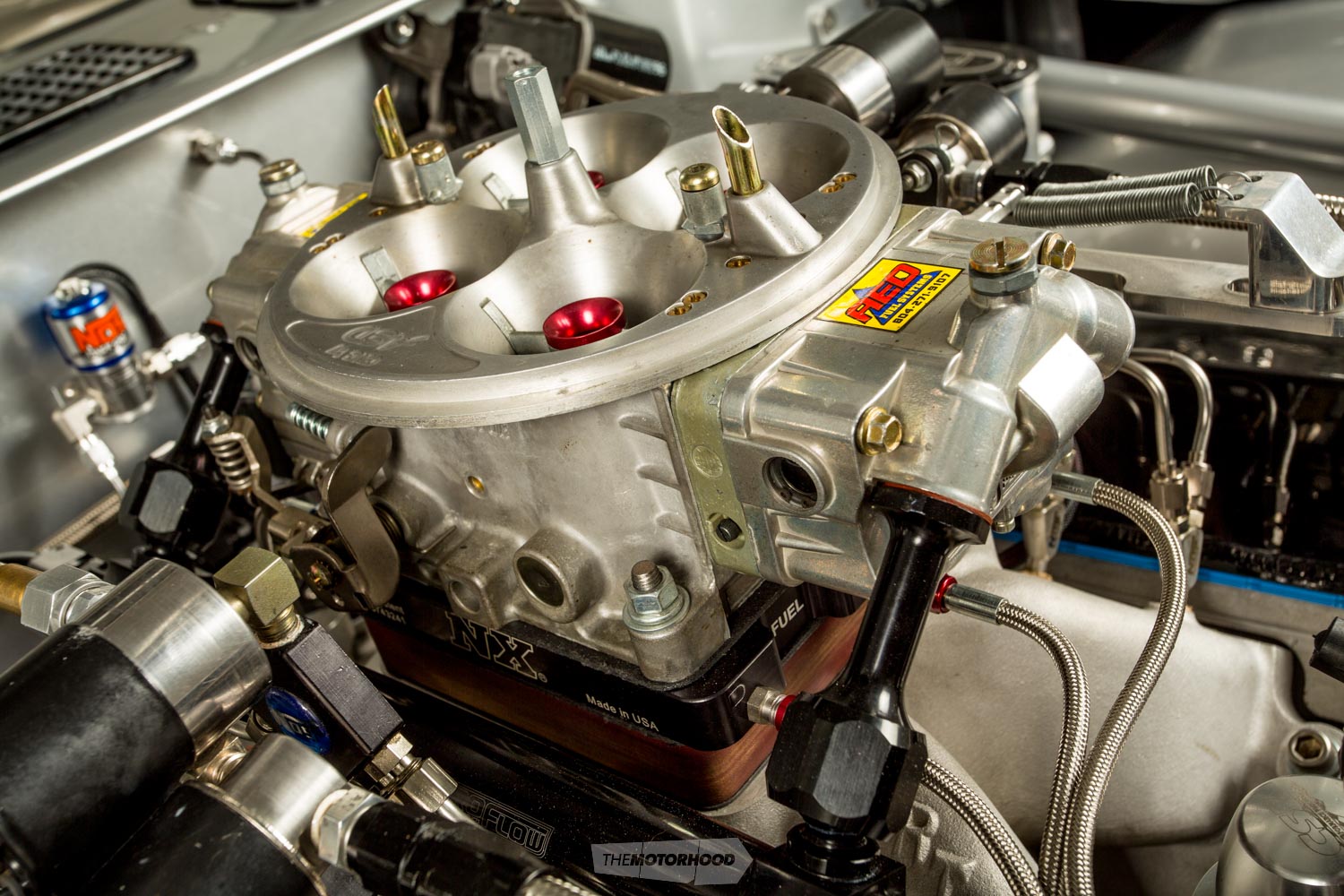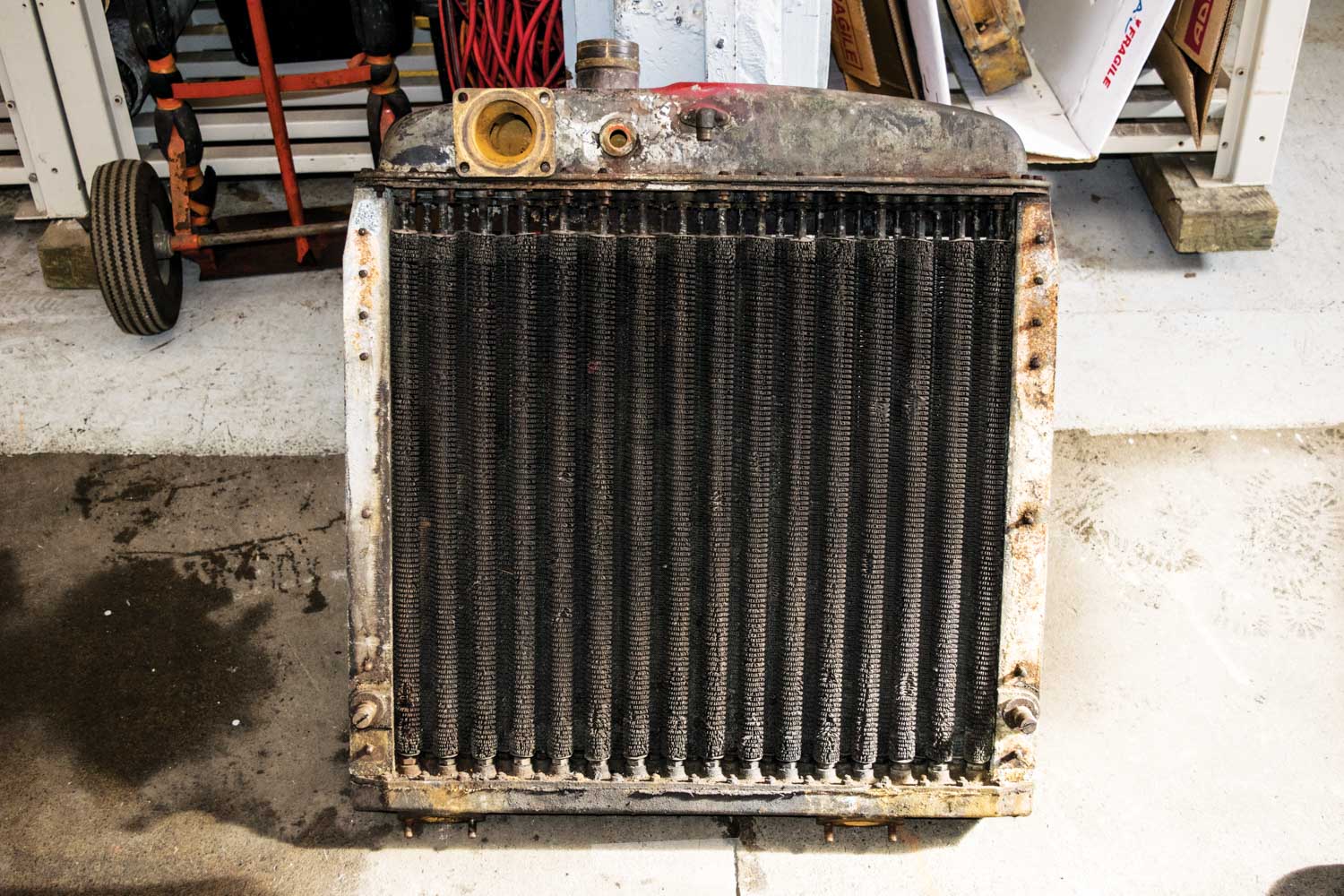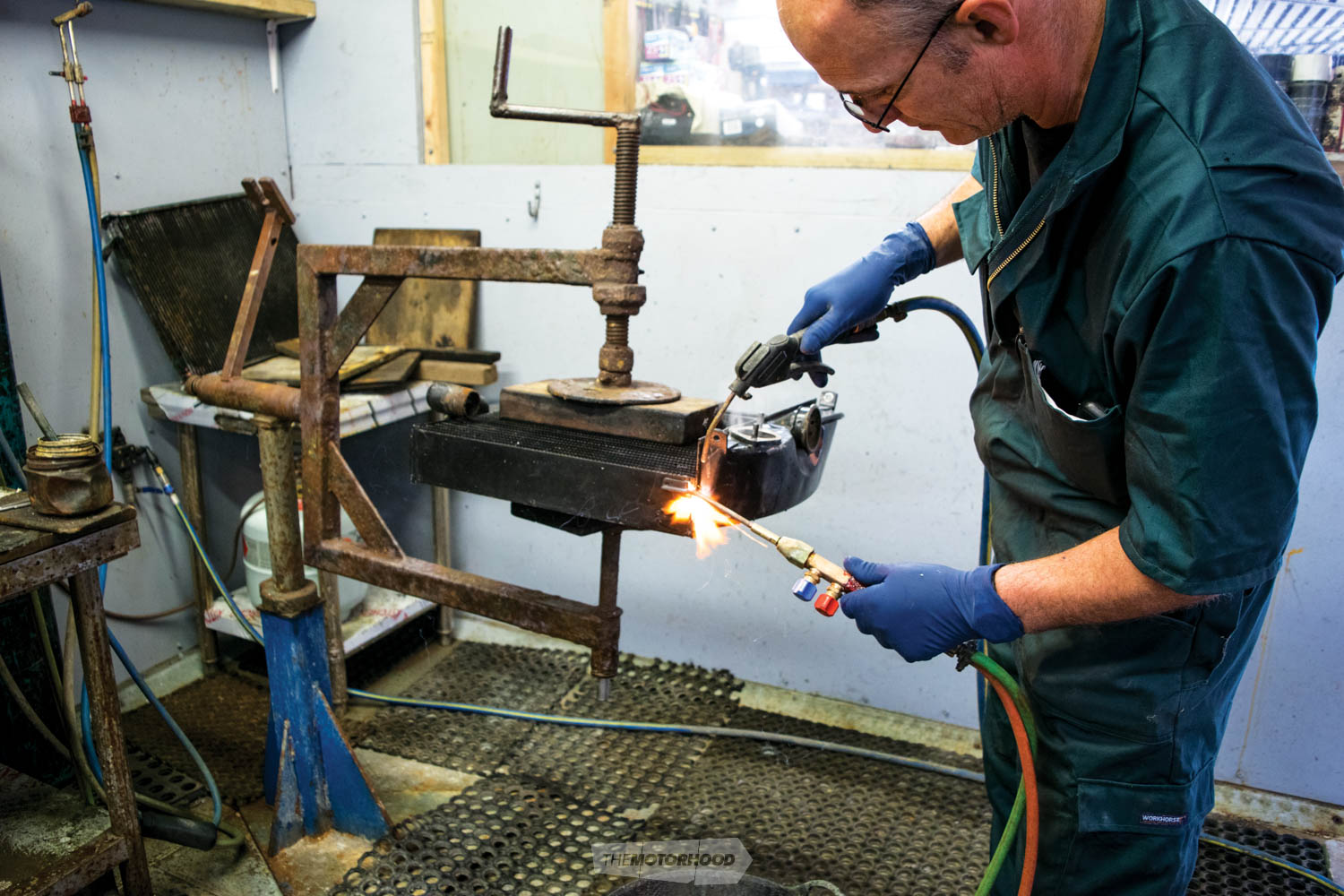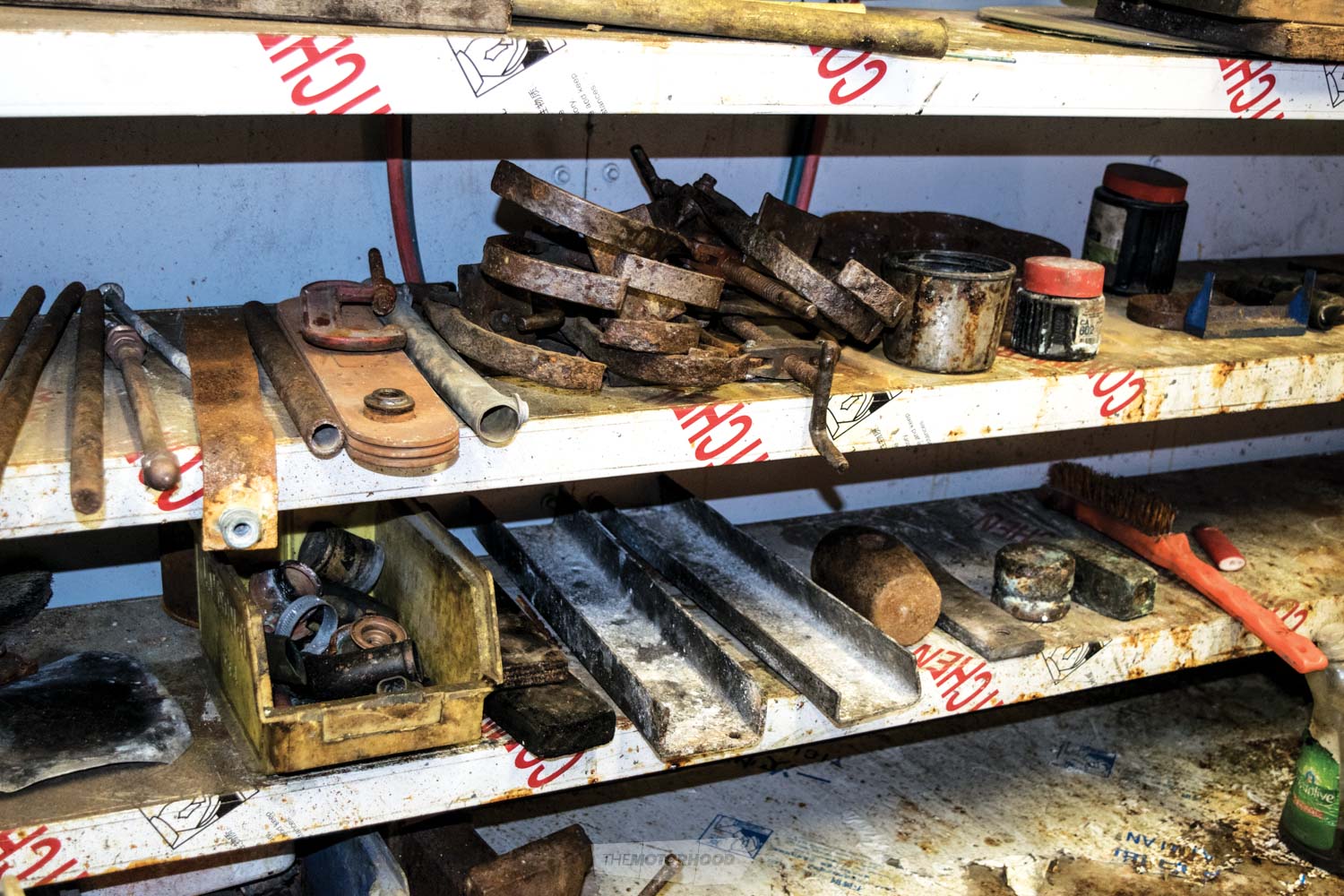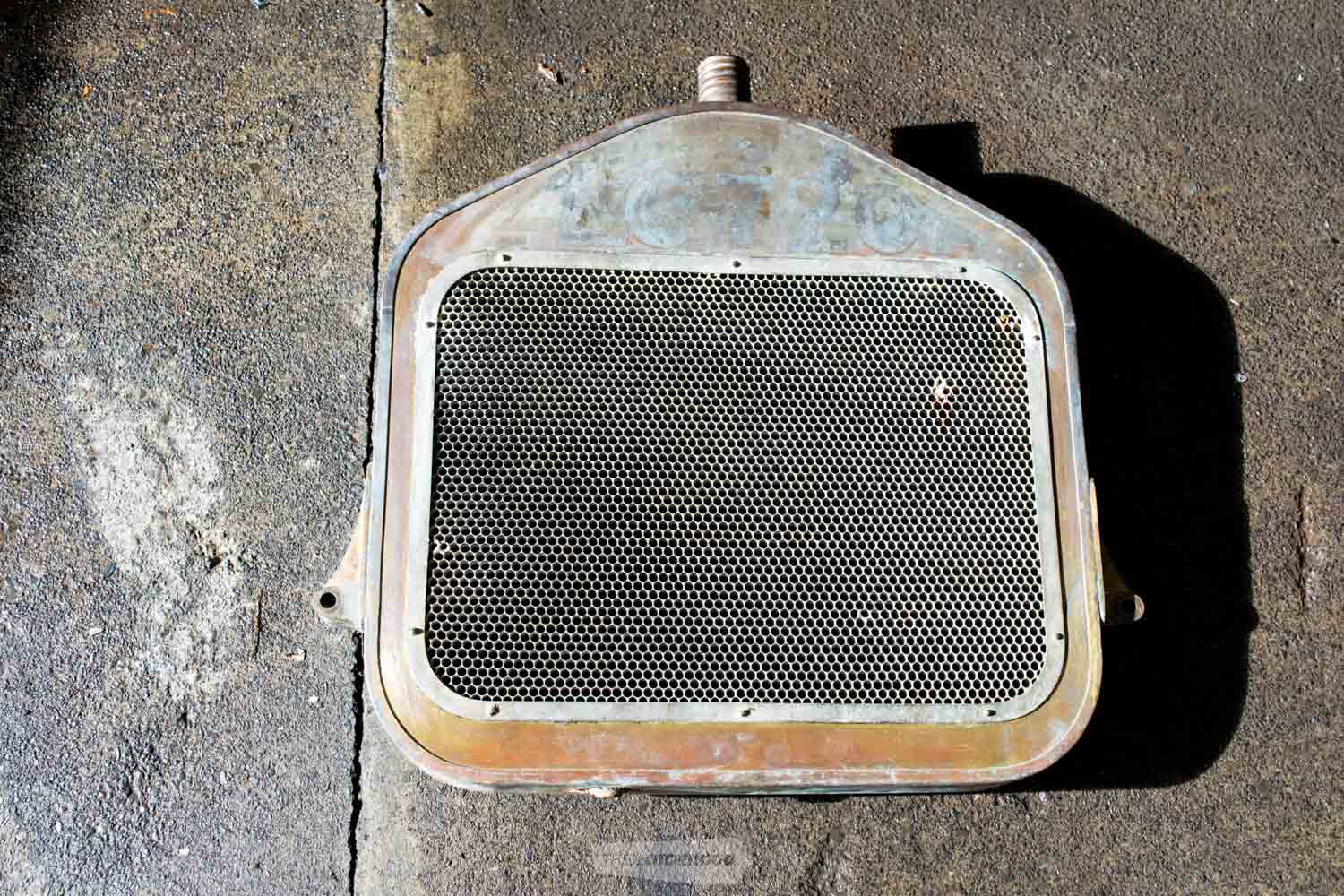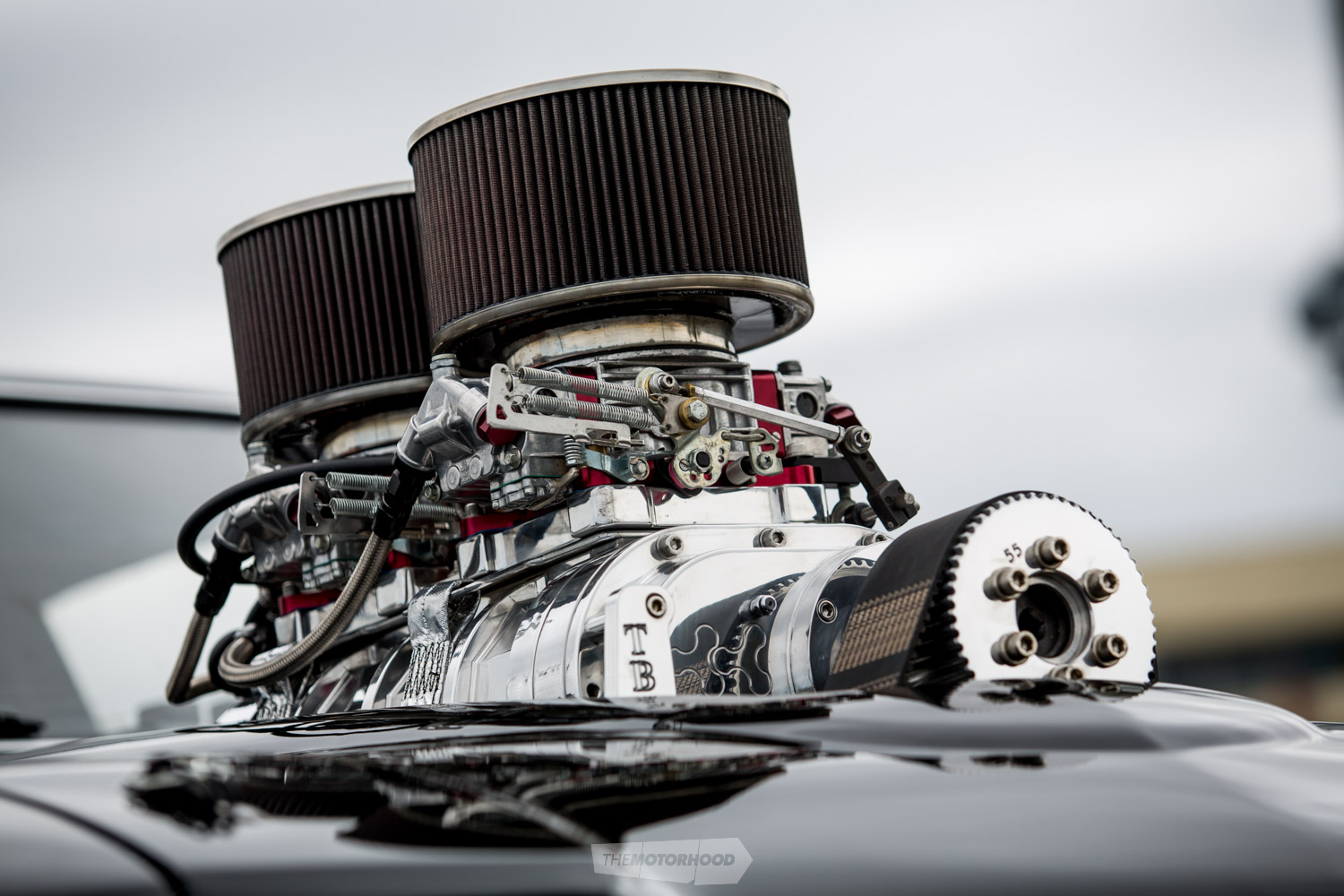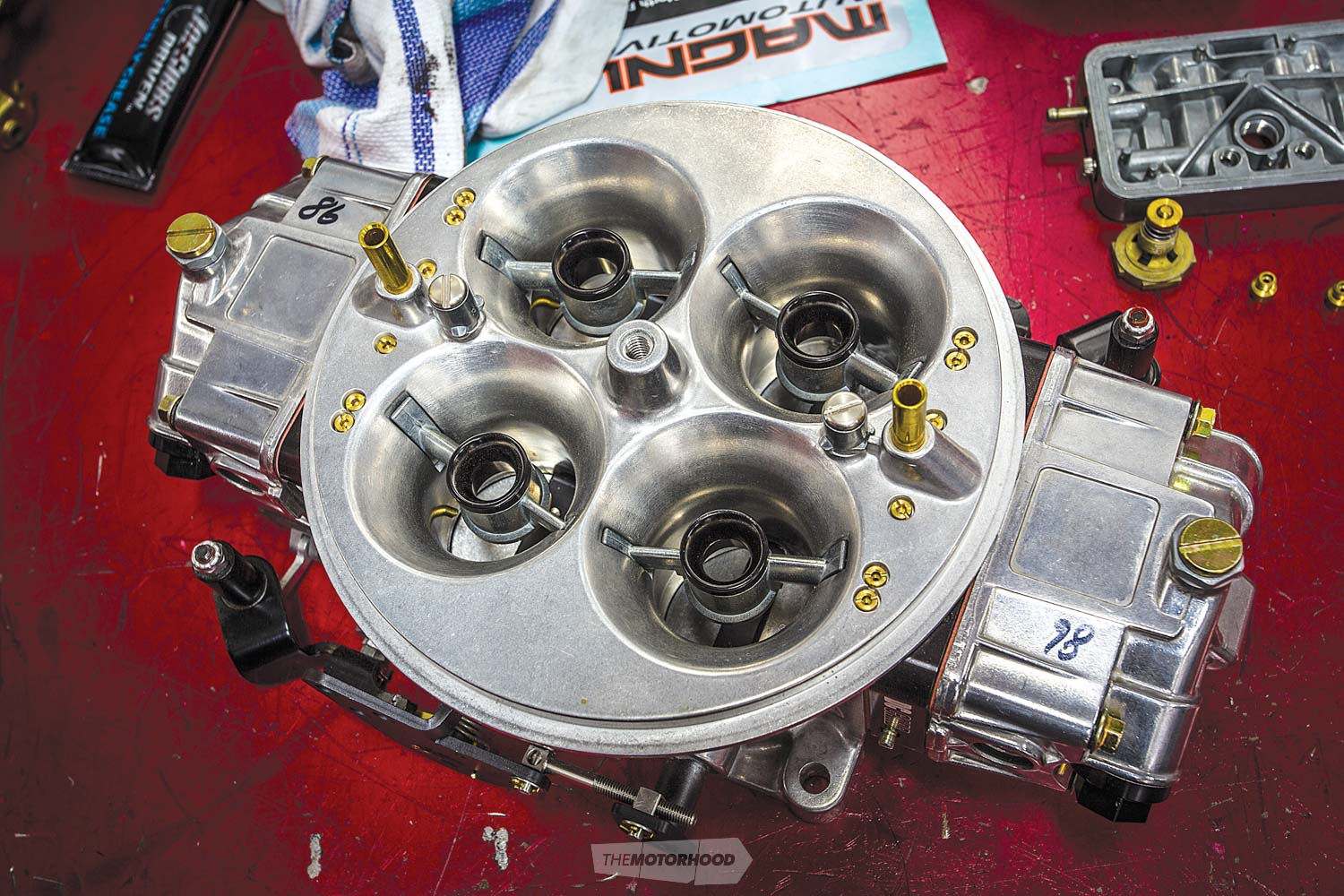The engine rightfully gets the most attention, as well as naming rights, in the engine bay, but if it is going to deliver its best, it needs the right mix of fuel and air for its firepower, and a steady supply of cool water to stay in its sweet spot
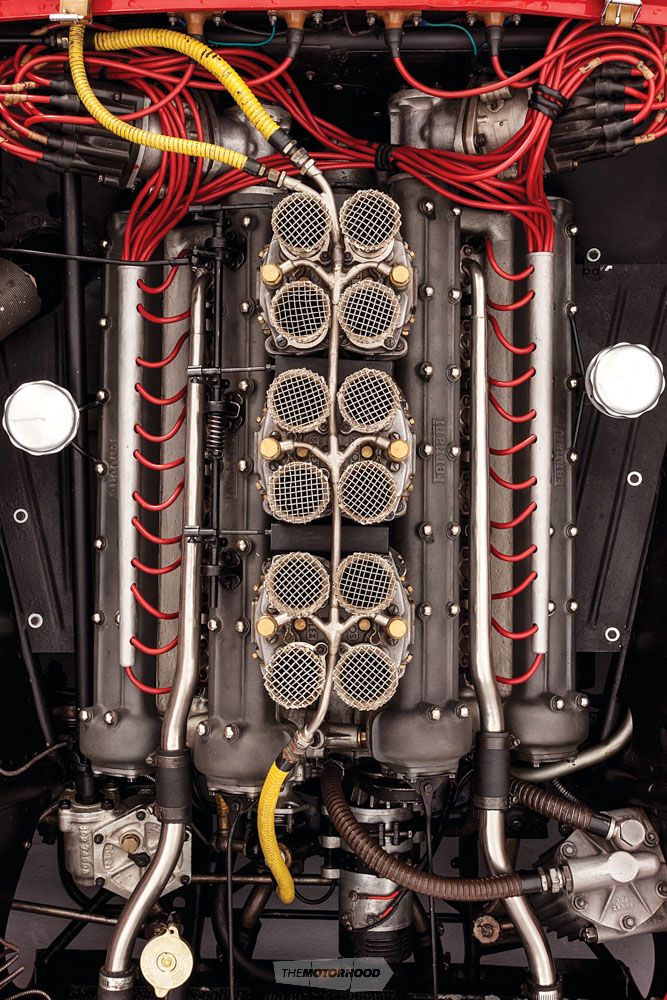
Cooling systems in older cars are especially worth your attention. Some of them weren’t great to begin with. The benchmark test in the early days appeared to be: ‘works most of the time’. Stop-start driving in today’s traffic adds another strain; cooling systems get gunked up over time, and the consequences of overheating all conspire to give them a high score on the cost–benefit ratio.
Overheating incidents, along with dodgy electrics, were probably the most common problems with the cars that we drove in our youth, so, if it’s still an issue with your classic car, this feature is for you.
First, take a look at the radiator. Stuck in front of the engine with little protection, radiators can take a hammering from low-flying insects, stones, and other debris. Although they have some margin of tolerance, any damage to those flimsy copper fins will block air and reduce their effectiveness, as well as make them look a bit sad. The big question is, what is it like on the inside? But let’s start with a quick primer.
Engines get hotter than boiling point because spark plugs are setting fire to fuel inside the cylinders, and all that metal rubbing together, even properly lubricated, also generates heat from friction. But we can still use water to maintain a good temperature by doing three things. First, we can pressurize it so that the boiling point rises and, second, add glycol, which has a higher boiling point than water and expands to further increase pressure. Finally, we can circulate the water through a heat exchanger — the radiator — which sheds heat through conduction to the outside air so that we can send cooler water back into the engine to pick up more excess heat.
The radiator comprises tanks, traditionally at the top and bottom, joined by rows of narrow tubes soldered to fins that dissipate heat through the accumulated massive surface area. It is connected via hoses to the engine. Your radiator might be as clean as a whistle, but, unless you have followed the advice in our September issue (No. 333) and spruced up your engine block, how do you know what’s lurking in the water jacket (the water-carrying galleries cast into your engine)?

Make sure you flush, acid wash, or even blast air through the water jacket on an engine block before reassembly. Auckland’s Auto Radiators is one of the oldest names in the business, and owner Brad Ross has been on the tools for 30 years. Brad has had to field complaints about radiators that he had built recently overheating — including on a car featured in these very pages — only to discover that the radiator was blocked with dirt. The engine block, overhauled elsewhere, hadn’t been flushed.
If your engine overheats, or takes a suspiciously long time to reach normal temperature, it could also mean that the thermostat is stuck and not doing its job of opening or cutting off circulation to the radiator.
Is your water pump up to scratch? When was it last checked? Operating in gluey fluids in a broad temperature range, they have a limited lifespan.
Time off the road or disassembled can also cause problems. Brad says that people who have reinstalled an apparently sound radiator only to find it full of holes might agree that leaving it full of water would have been safer. He says that a dirty radiator left dry can kick-start corrosion.
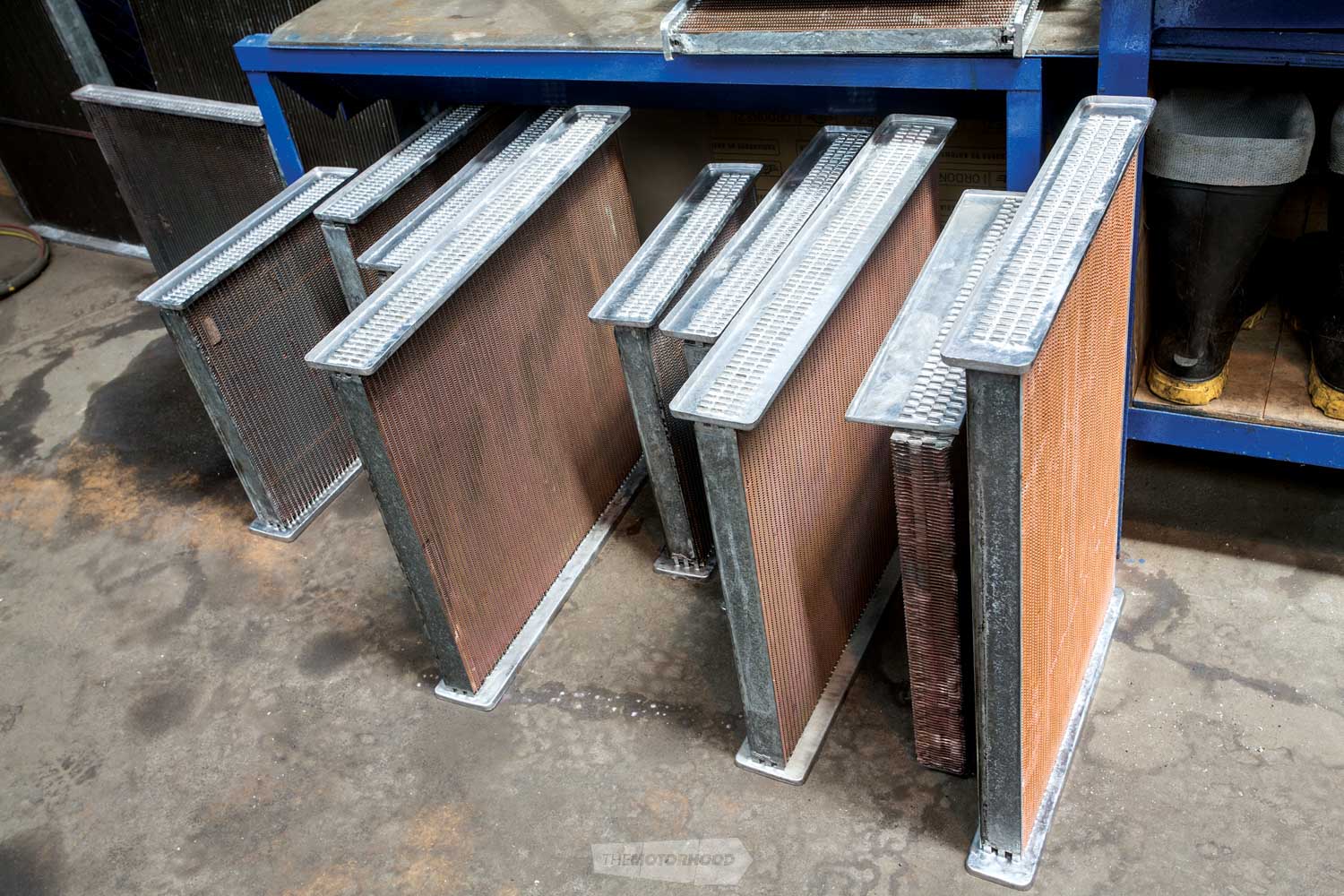
Greg Geddes says that New Zealand manufacturers make top-quality cores, but the materials and work involved make for high-value items
Rob at Capital Radiators says that paying attention to radiators is prompted by one of three things: leaks, overheating, or poor condition. General condition is especially relevant to classic car enthusiasts who have just overhauled a motor. “If you have a nice engine, you want to make sure that your cooling system is also good,” he says.
The first step if your engine overheats is to check the water level. But if you have lost water, topping it up is not going to solve the problem — it will happen again. The next step is to do a pressure test. “You have to find out if there’s a leak,” says Rob. And look underneath for telltale signs.
Overheating can be so frustrating that specialist help will usually pay dividends. Specialist radiator workshops can repair or remanufacture parts to an original pattern, or they may know of some improvements that overcome a known weakness or design flaw. Experience counts here.
Mike Hope of Townrow and Sanko Radiators in Hastings cautions that the first thing to appreciate when reconditioning or rebuilding a radiator is that the price of copper, brass, and solder have shot up recent in years.
“A re-core that might have cost $200–$300 20 years ago could now cost $1500,” he says. “Solder costs us $1K a roll.”
He has had customers who have spent $20K on a hot rod engine say that “they just want something to go in the hole”, but the cooling system is not the place to cut corners, and it’s quite involved.
He is currently rebuilding the radiator on a Model A Ford, disassembling the three-piece top tank. “I’ve quoted him eight hours but I know it’s going to take 20,” he says.
It also takes skill. Even a simple repair is rarely simple. “You’ve got to have fine control of the flame and heat, or, as you close one leak, you open another and dislodge 20 years of crap.”
Mike says that you can buy cheap aluminium radiators, but they can be toast inside a year: “Quality aluminium radiators are fine, but if you expect a cheap one to last as long as the original in your 1980s Corolla, well, it’s not going to happen.”
Brad Ross in Auckland says that if customers ask for an aluminium radiator he always asks why. He says they look ‘bling’ and are lighter, but they are much more likely to corrode and the serviceability is much lower. “And if you want a quality aluminium core, manufactured in Australia or Europe, the cost of importing them means that they are not much cheaper,” he adds.
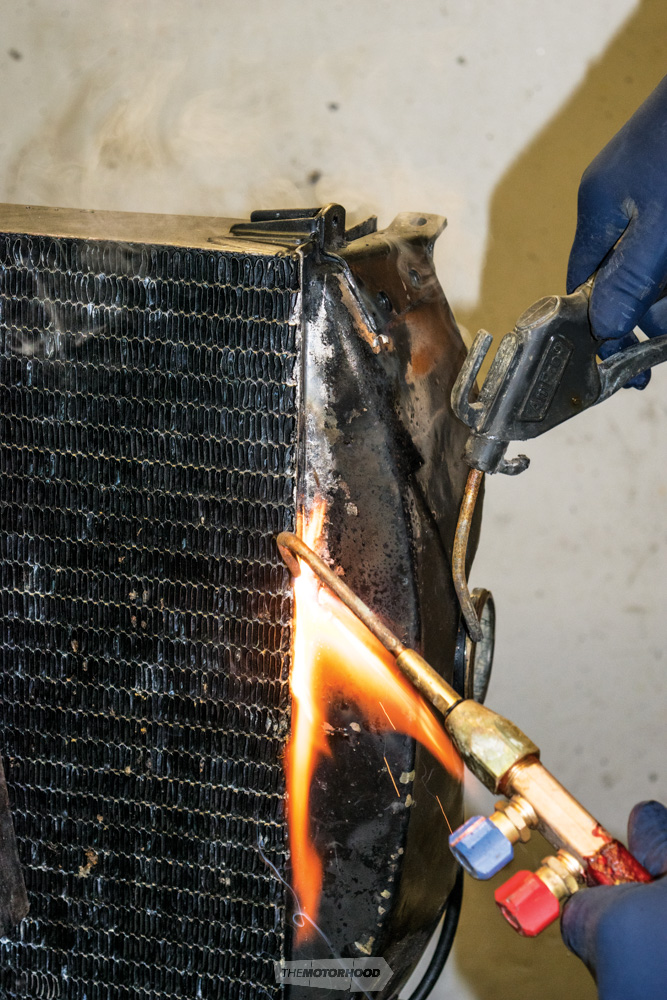
Intricate work – Rebuilding an original radiator is time consuming and costly, but well worth it
Brad also questions customers who might want to replace engine-driven fans with electric alternatives. “If the engine’s running, the engine-driven fan’s working, and, if it has a shroud, it will also be very effective.”
Aluminium radiators can also suffer electrolysis. Brad recalls EA Falcons had early aluminium radiators. Falcons were a common choice for taxis, and their extra lights and meters would create stray electrical currents, “and your radiator becomes a battery,” says Brad. “The sparky would say that he’d done it right, and he had — for a brass and copper radiator.”
Hornby Radiator Shop’s Greg Geddes says the expectation that “everything comes from China” makes for a tough market. The full range of work comes through his workshop, from simple replacements of standard equipment to one-offs, and it’s intricate work.
If a customer hasn’t got an existing radiator to work with, it’s vital to get the numbers of tubes and rows, capacity, and pitch right when specifying a one-off core from specialist manufacturers. Greg says that New Zealand manufacturers make top-quality cores, but the materials and work involved make for high-value items. Even vintage-pattern honeycomb cores can be remanufactured here. But if a radiator doesn’t work, the radiator shop will bear the cost, so experience and craftsmanship is integral to the business.
“We get as much information as we can,” says Greg. “There’s quite a bit involved, and you have to work carefully through it.”
Greg says that they usually fabricate the tanks themselves, and they can sometimes save customers money by using spares that they can cut and join — “there’s always a way around it if you know what you are doing.”
Rob from Capital Radiators says that replacing or remanufacturing radiators will be the best option for systems in poor overall condition but it depends what the customer wants. He can do anything from producing a custom system to leak repairs, and, with more than 40 years’ experience in the workshop, he can tailor solutions to give the best value for any budget.
Re-cores for small cars like a Datsun 1200 will obviously cost less than a four-row radiator for a Chevy Impala. “It’s down to time and quantity of materials, but it could cost as little as $400,” he says.
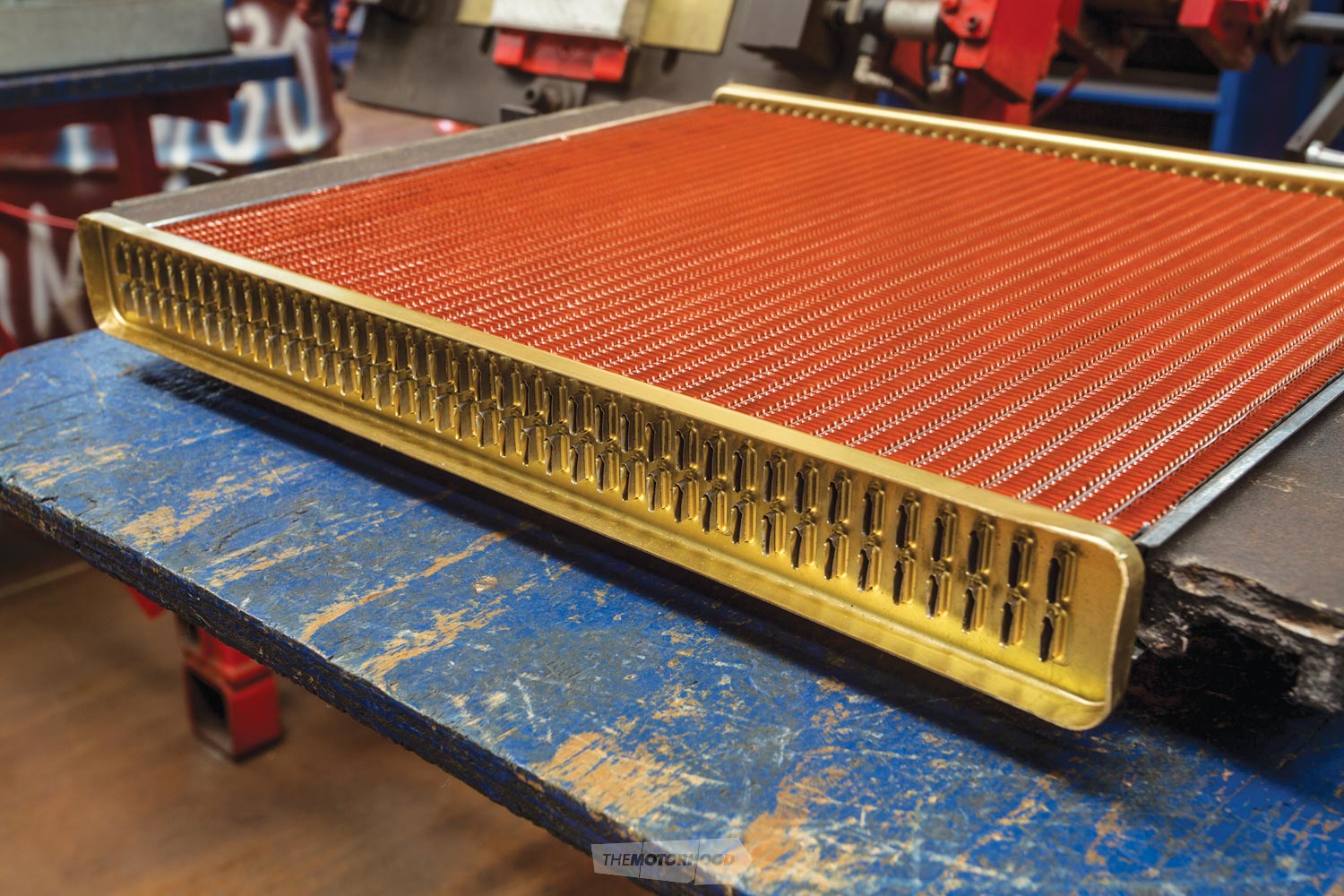
Rob mentions that their expertise with tanks and pipes also extends to fuel-tank and fuel-system repair and reconditioning.
Auto Radiators in Auckland also reconditions fuel tanks, and Brad says that they line theirs with a special flexible compound that stays flexible, unlike most other types available — so, “you should never have another problem.”
Brad echoes the comments about craftsmanship in radiator work: “They are all black and square. They are all the essentially same but a bit different, and you have to pay attention.”
And he takes pride in his work, saying “I make the extra effort to make the finish as good as possible.”
He’s offended by soldering “that looks like it has been dropped by a seagull”. It takes very little extra effort to make it tidy, he tells us, adding that “if someone has invested a lot of time and care in a rebuild, I want the finish on my part of it to reflect the quality, and to be the best it can be.”
Singing in tune
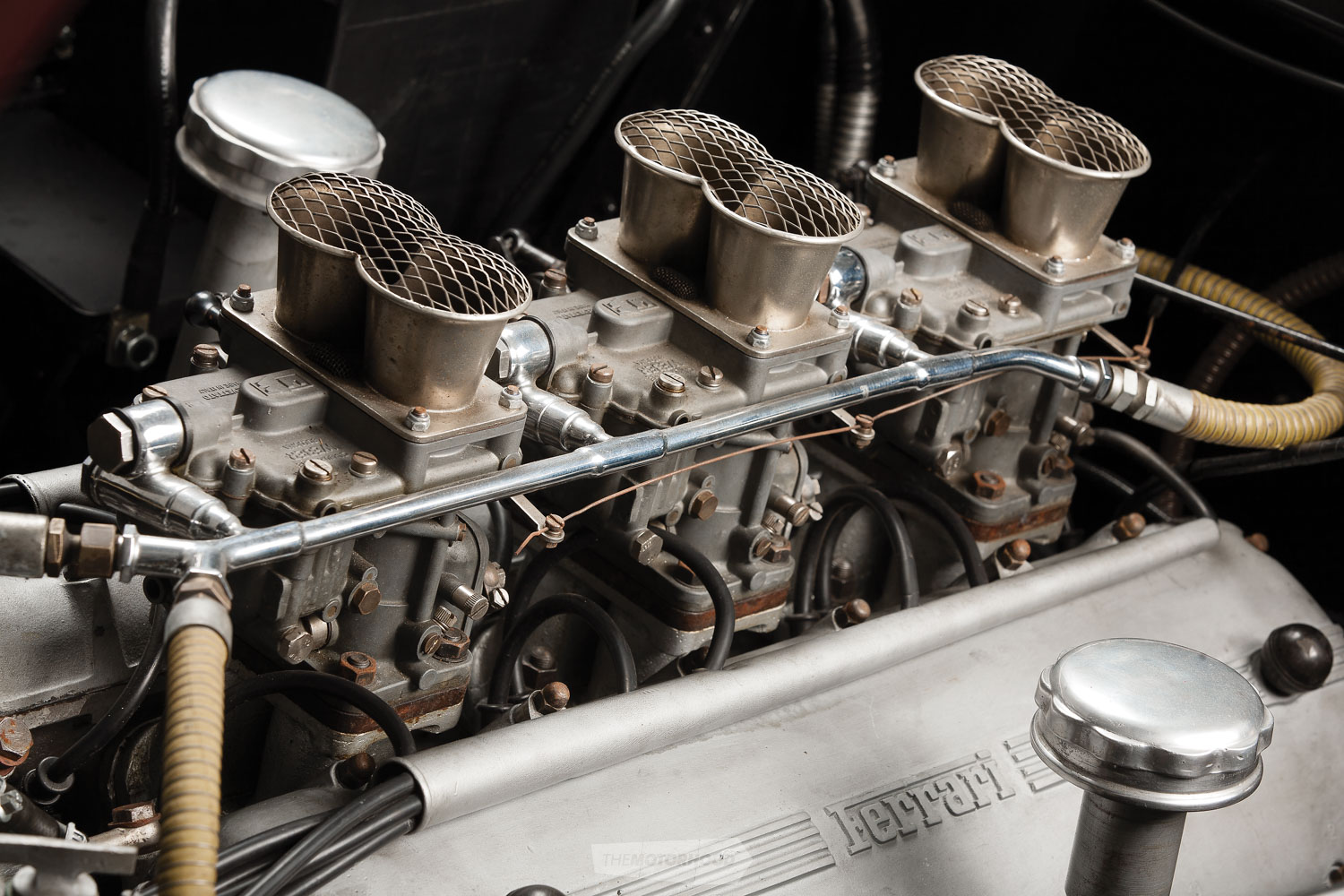
If its temperature is stable but your car won’t purr along as advertised or accelerate cleanly, suspicion often falls on the carburettor. But check a few other things first. Check the compression on each cylinder, that the ignition system is up to scratch, that the spark timing and advance curve are correct, and that there are no manifold leaks — reconditioning your carb is not going to fix those issues.
Any improvements to an engine’s breathing will also affect carburettor performance. A different exhaust or manifold, porting and polishing or shaving the cylinder head; a different cam profile; or even a different air cleaner will all have some effect.
Brian Wingate of the Carburettor Service Centre has worked on carbs since the mid ’70s. He says that if you are overhauling an engine on a classic car you should also get your carb overhauled: “It’s mechanical like an engine, it’s done the same miles, and parts wear.”
Carb kits, with seals, gaskets, and diaphragms, are available, but they won’t fix wear or their symptoms. “British cars start to run rich and run out of adjustment,” says Brian. “Japanese cars run too lean, and, when cruising, they stumble or hunt.”
The simplest way to check your mixture is to pull the spark plugs and inspect the tips. Sooty plugs indicate an engine running too rich; white or light grey plugs, too lean. The right mix is indicated by straw-coloured plugs.
If engines haven’t been run for a long time, seals can perish, and the works can get gummed up as the volatiles in modern fuels dissipate. If your car is going to sit idle for a time, Brian says it’s worth adding a fuel-treatment additive (stocked at chainsaw shops) and running it through the carb to avoid fuel in the carb turning into glue.
Brian has also noticed a recent trend of carbs coming in from customers who have run older cars on higher octane fuel containing ethanol, often for less than three months. “Ethanol doesn’t agree with old rubber,” he says.
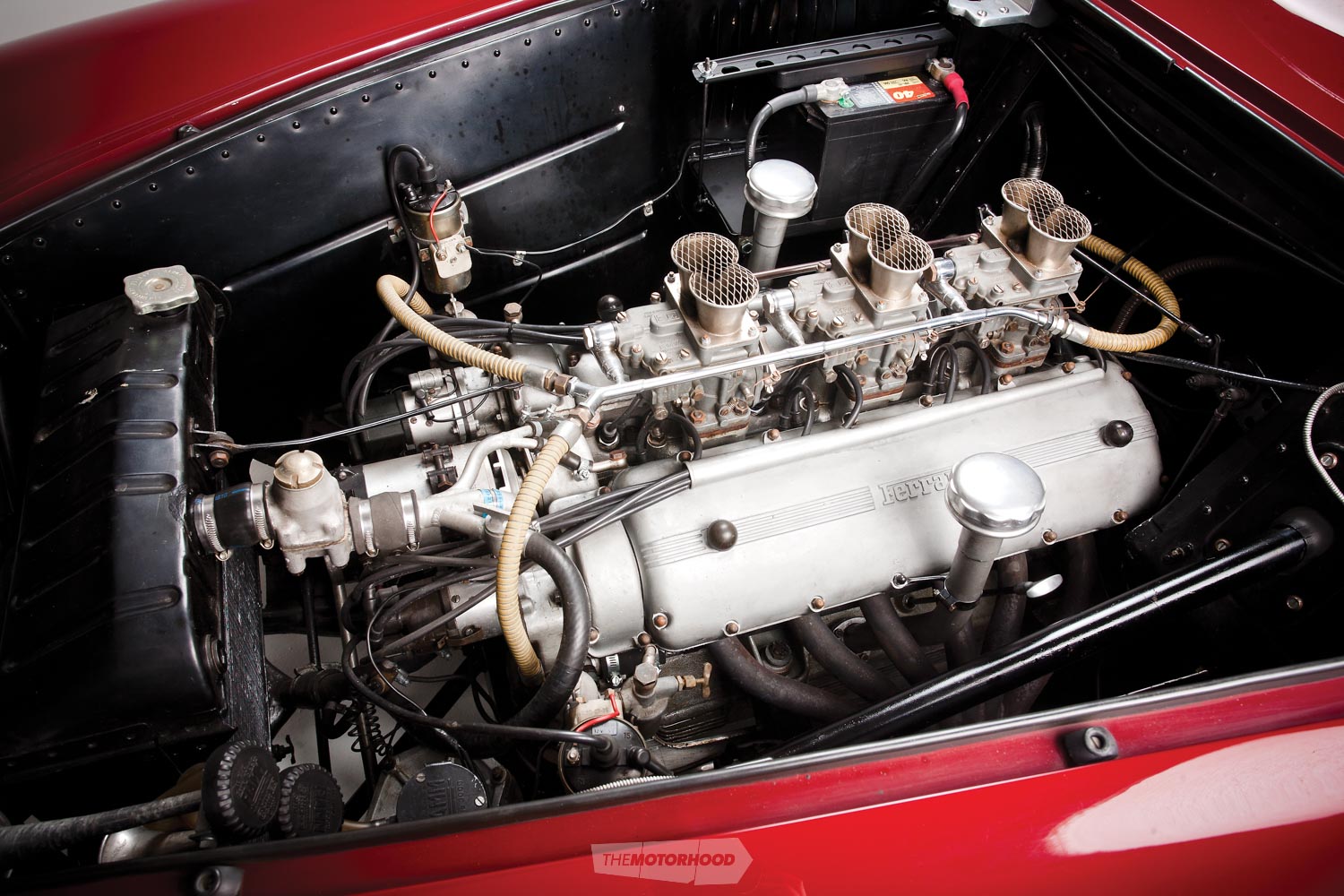
A carburettor has a simple job — to deliver a mixture of atomized air and fuel at the right ratio, 14.7 parts air to one of fuel — to get the cleanest burn, which consumes all the fuel and all the air in every cylinder.
The ideal fuelling mix and the rate at which it burns, regardless of engine speed, are constants, but everything else is variable. Ambient temperature and air pressure vary; engine temperatures vary enormously. Throttle openings change, and you need to deal with the fact that fuel is thicker than air. Carburettors don’t even use a fuel pump to push things along; it’s the vacuum created in each engine cylinder that drives them.
They use the Bernoulli principle — the same one that allows aeroplane wings to stick to the sky, and yachts to sail to windward. It’s the principle of sucking, although Weber Specialties’ Murray Johnson insists that there’s no such thing as sucking — it’s simply the high-pressure side pushing. “I use the word ‘physics’ a lot. There are laws of nature; they are not suggestions, and you can’t alter them because you want to you. That’s why they’re called ‘laws’,” he says.
The cylinder sucks (creating a low-pressure area); the narrow waist in the carburettor barrel, the venturi, accelerates the air, which also draws in a spray of fuel through the main jet nozzle, and the atomized fuel and air heads to the cylinder. How much gets through is controlled by a butterfly valve across the barrel, operated by the accelerator pedal, hence the term ‘throttle’. Pressing the pedal simply opens the airflow to the engine.
A carburettor, though, is much more than a simple venturi device. Carburettor designers had to add other systems to overcome all the variables. These include a bypass system, which provides a fuel-air mix at idle, when the pressure difference in the venturi is low. You can adjust the idle screw without affecting the rest of the carb’s performance. The choke, manual or automatic — typically another butterfly valve — makes the mixture richer for cold starting. Another system, a secondary jet or booster mechanism, adds fuel when the throttle is opened. Without an extra shot of fuel, the mixture would immediately go lean, causing the engine to stumble exactly when you want more power.
As demand for power increased, twin carbs became common on performance engines. Until fuel injection took over, performance-oriented motorbikes had one carburettor per cylinder. However, in larger (car) engines, the continuous draw provided by multiple cylinders helps overcome the fuel-inertia problem you get in a stop-go single-cylinder scenario.
Weber began developing twin-barrel carbs in the 1930s and also patented a design for different-diameter barrels. The smaller one fuels light running; the second, larger, barrel kicking in when power is called for. In 1965, in the US, Rochester developed the first four-barrelled carbs for V8s. They usually operate as two different-sized pairs. Once again, demand for more power led to twin-carb set-ups, or ‘dual quads’.
On carburettors, it’s often the spindle shafts, and sometimes butterfly valves, that wear, says Murray, but he’s also seen carbs over-tightened on manifolds, which have distorted the barrels. “We had to machine one out 2mm oversize,” he says. He hasn’t seen any wear on jets using clean fuel, just on air-collection jets that have operated in very dirty air.
Auto Trail’s Paul Morris says that while the Hamilton company stocks carb kits and parts for people who can do the work themselves, the only carb service they offer now is a full recondition.
“It’s not worth doing unless you do it properly,” he says. “Carburettors are delicate and intricate, and they have to be set up right. They only have to be a little bit out and you have problems.”
Brian Wingate, whose service centre is based in Normanby, South Taranaki, agrees. If a car has sat for a long time, seals and diaphragms can go hard, crack, and start leaking, but you have to address wear if they are going to perform as intended. Brian says that some owners are surprised when a carb is restored to full function; they didn’t know their carbs could be that good.
He knows the foibles of most carbs and where to look for issues. Wherever they come from — and they come by courier from all over the country — he gives every carb a refreshing acid bath. That gives him a solid base for any machining, bushing, or resurfacing. “It also makes them look brand new,” he says.
If customer particularly wants that look for an as-new restoration, Brian also zinc plates all the steel bits; then, he says, “they look brand new, they perform like new, and the steel stays protected against rust.”
Auto Trail’s reconditioning also involves stripping and cleaning, replacing any worn parts, and setting them up properly. “They come back as good as new, or better than new, according to some people,” says Paul.
You only need to set the idle and mixture screw and, on Holleys, the float level.
Weber’s Murray Johnson says that he’s seen people give up on classics that don’t run well, but, like Brian, he says that some people don’t realize what they are missing with a worn carb.
Some people aim to fix lacklustre performance with modern cams, but there’s a caution. He cited cams for Valiant Chargers (which run triple Webers), designed recently, in the era of highly responsive pulse-type fuel injection. “You can try anything, but they just won’t run right.” Carbs work with continuous flow, and cams designed for that situation are simply more appropriate, he says. Even the standard cam will work better. “It’s simply horses for courses.”
Another tip: “Fuel-pressure regulation is critical,” Murray says. Some brands of replacement regulators simply don’t work. “We test them and they are doing nothing,” he says.
It’s not always about being standard. Murray tells us that a strong side of his Auckland business currently is replacing the worn-out and energy-sapping emissions gear on ’80s and ’90s Japanese utes with downdraft Webers. “That works really well. In all cases we achieve more torque for the same or less fuel use,” he says.
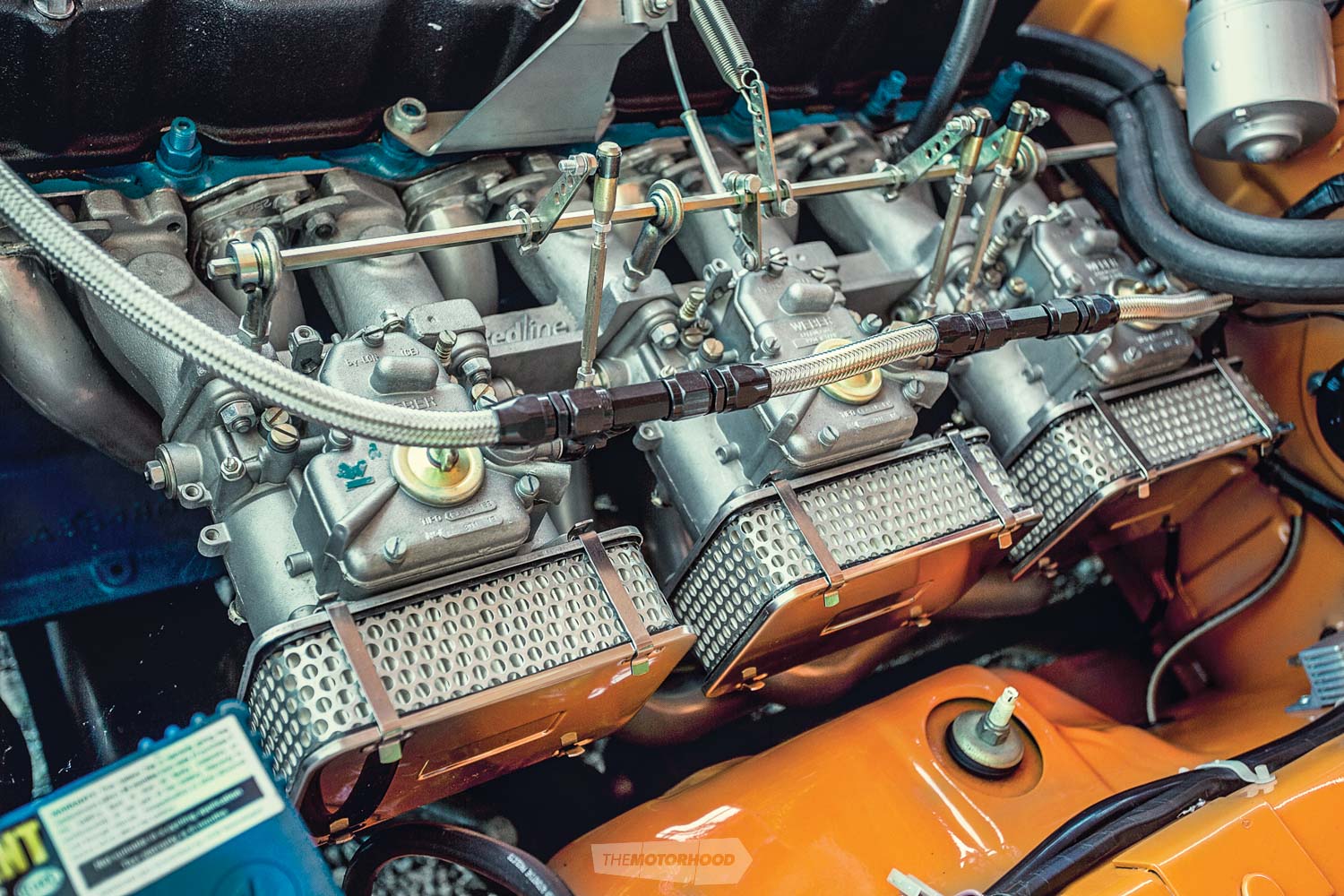
Wayne Lippert says that word of mouth is persuading people carrying out restorations on classics or cars that have stood for a long time to seek out his workshop at Carburettor Restorations in Dunedin. He has also seen skin-deep restorations.
“But,” he says, “I find more people are prepared to spend money on fuel and ignition systems now. If you’ve got an early Land Rover, a Willys Jeep, or a Wolseley 6/10, you know that parts will be hard to find, but we can do it.”
If a carb is still on a car and is suspected of causing poor running, Wayne will also go out on-site to check other things — like timing, distributors, and leads — before returning with a carb for overhaul. He’s a qualified auto electrician, so he can sort electrical problems out too.
Wayne’s first job, at age 15, was working on carbs, and he knows his way around most of them. He also manufactures parts if he has to, but he also knows which parts are common between different models, so he can sometimes find parts in spares.
His main sources are local but also the UK and US. While this might push the turnaround time out to two or three weeks, that’s usually not a problem when the rest of the car is also getting a makeover.
Auto Trail also has another string to its bow. Staff can make up new HT leads on-site for cars whose poor running isn’t — or isn’t entirely — due to a sub-par carb. Still behind the dashboard, Auto Trail offers a speedo reconditioning service as well, covering everything from faded graphics through damping, gearing, to new cables. Paul says that they can recalibrate speedos for different gearboxes or wheel sizes, or reset mileages in replacement speedos to match the original.
The future of fuelling
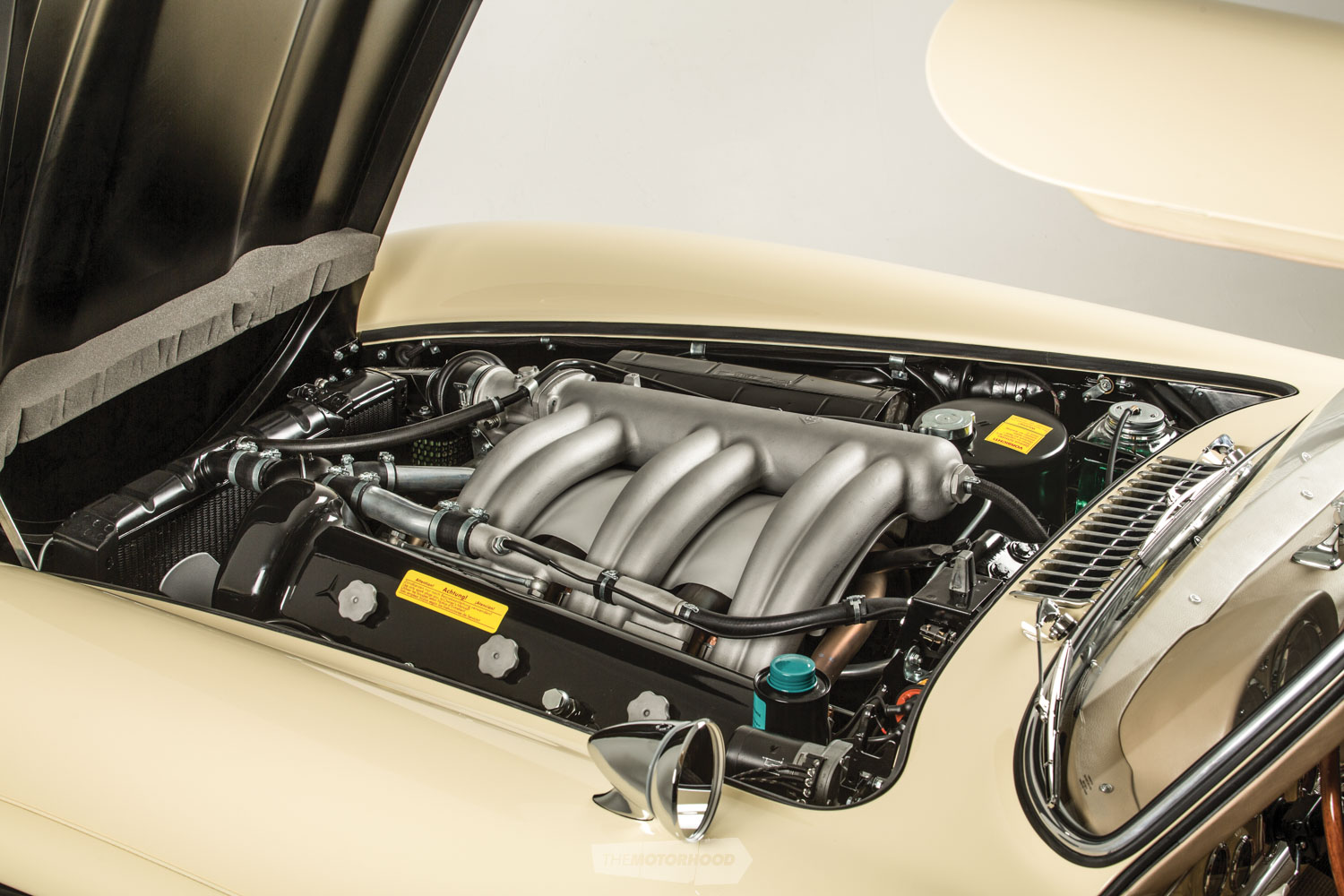
A fully restored Mercedes Benz 300SL Bosch direct-injection system
Fuel-injection systems began to replace carburettors on production cars in the 1980s, although they date back to the vintage era in competition cars, and in aviation. Diesel engines have always used injection systems, but, for petrol engines, carbs were simpler, cheaper, and worked better overall until this era.
Petrol injection has some advantages — better cold starting and idling; less susceptibility to temperature and pressure changes — but it was its ability to run leaner through greater accuracy that won the day. Clean-air regulations drove the change, and catalytic converters need clean exhaust gases to operate effectively.
Modern fuel-injection systems are masterminded by ECUs (electronic control units), but the systems in the early years were all much more complex mechanical systems.
There are several variants. Fuel is pressurized with a pump and then injected into the manifold (single-point fuel injection), or into in the inlet tract just upstream of each inlet valve (multi-point fuel injection), or directly into the cylinder head (direct injection). The Bosch direct-injection system in the iconic Mercedes-Benz 300SLC that Stirling Moss drove to victory in the 1955 Mille Miglia had injectors in the spark-plug holes in the existing block. The spark plugs were moved to the cylinder head.
Modern common rail systems use extremely high pressures, up to 26,000psi, and highly responsive piezoelectric injectors that can fire multiple injections per cycle. Note that these pressures are dangerous. A mechanic can apparently suffer a ‘hypodermic jet-injection’ of fuel at anything over 100psi.
Next month is our special Targa issue, and we’ll take a look at what it takes to set up a street/track competition car.
Thanks to Paul Morris of Auto Trail, Murray Johnson of Weber Specialties, Brian Wingate of Carburettor Service Centre, Wayne Lippert of Carburettor Restorations, Mike Hope of Townrow and Sanko Radiators, Greg Geddes of Hornby Radiator Shop, and Rob Cuttle of Capital Radiators for their expertise and insights.

